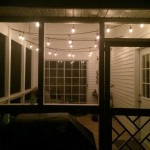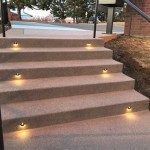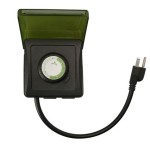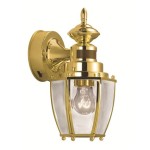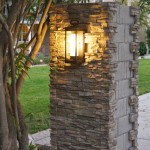What Color Screen Is Best For Outdoor Projector?
Outdoor projectors are becoming increasingly popular for entertainment, presentations, and even business meetings. They offer a large, immersive viewing experience, making them ideal for backyards, parks, and other open spaces. However, one crucial factor that can significantly impact the quality of the projected image is the screen color. Choosing the right screen color can enhance contrast, brightness, and overall viewing experience, while a wrong choice can lead to washed-out colors and poor visibility, especially in daylight conditions.
This article will explore the different screen colors available for outdoor projectors, highlighting their individual advantages and disadvantages. It will also discuss factors such as ambient light, projector brightness, and desired viewing experience to help you make an informed decision. By understanding these factors, you can select the best screen color to maximize your outdoor viewing pleasure.
White Screens: The Traditional Choice
White screens are the most common and traditional choice for projectors, and for good reason. They offer excellent reflectivity, ensuring that the projected image is bright and visible. This makes them ideal for outdoor settings, especially when ambient light levels are high. White screens are also relatively inexpensive and readily available, making them a budget-friendly option.
Benefits of White Screens:
- High Reflectivity: They reflect a large amount of light, ensuring a bright and visible image.
- Wide Viewing Angle: They offer a wide viewing angle, allowing more people to enjoy the image from different positions.
- Cost-Effective: They are generally less expensive than other screen colors.
- Readily Available: They are easily accessible from various retailers.
Drawbacks of White Screens:
- Limited Contrast: The high reflectivity can lead to decreased contrast, especially in low-light conditions. This can make dark details in the image less visible.
- Potential for Washout: In bright sunlight, the image can appear washed out due to the intense reflection of light. This can make it difficult to see the details clearly.
Gray Screens: Optimizing Contrast and Brightness
Gray screens offer a more sophisticated approach to outdoor projection by striking a balance between reflectivity and contrast. They absorb some of the ambient light while reflecting the projected image, resulting in improved contrast and a more vibrant picture.
Benefits of Gray Screens:
- Enhanced Contrast: They absorb some of the ambient light, resulting in a higher contrast ratio and more defined details, particularly in dark areas.
- Reduced Washout: They mitigate the effects of bright sunlight, preventing the image from becoming washed out.
- Improved Color Accuracy: They enhance color accuracy, resulting in a more natural and realistic image.
Drawbacks of Gray Screens:
- Lower Brightness: Due to the absorption of some light, gray screens can be slightly less bright than white screens, especially in dimly lit environments.
- Higher Cost: They are generally more expensive than white screens.
- Limited Availability: They may not be as widely available as white screens.
Black Screens: Superior Contrast in Low Light
Black screens are designed for use in low-light environments, where their ability to absorb ambient light shines. They offer the highest contrast of all screen colors, providing deep blacks and vibrant colors. While not ideal for daytime outdoor use, they are perfect for evening gatherings and movie nights under the stars.
Benefits of Black Screens:
- Exceptional Contrast: They absorb the most ambient light, resulting in a highly contrasting image with deep blacks and vibrant colors.
- Immersive Viewing Experience: They create a more immersive viewing experience, especially in low-light conditions.
Drawbacks of Black Screens:
- Poor Daylight Performance: They are not suitable for use in direct sunlight, as the image will be almost invisible.
- Limited Brightness: They reflect the least amount of light, resulting in a relatively dim image, particularly in bright environments.
- High Cost: They are typically the most expensive screen color option.
Ultimately, the best screen color for your outdoor projector depends on various factors, including:
Factors to Consider:
- Ambient Light: The amount of ambient light in your environment will significantly impact your choice. If you are projecting in bright sunlight, a white or gray screen may be better. If you are projecting in the evening or under a canopy, a black screen can provide superior contrast.
- Projector Brightness: The brightness of your projector will also influence the screen color choice. A higher projector brightness will generally allow for brighter images, even with a darker screen.
- Viewing Experience: Consider the desired viewing experience. If you want the brightest possible image, a white screen is a suitable option. If you prioritize contrast and color accuracy, a gray or black screen may be more suitable.
By carefully considering these factors, you can choose the best screen color for your outdoor projector and enjoy a stunning visual experience.

What To Know Before Outdoor Projectors Screens Projectorscreen Com

The 3 Best Outdoor Projector Screens Of 2024 Reviews By Wirecutter

What To Know Before Outdoor Projectors Screens Projectorscreen Com

The Best Outdoor Projector Screens For 2024 Popular Photography

The 3 Best Outdoor Projector Screens Of 2024 Reviews By Wirecutter

The 5 Best Projector Screens Of 2024 Zdnet

The Best Outdoor Projectors For 2024 Pcmag

The Best Outdoor Projector Screens For 2024 Popular Photography

The 3 Best Outdoor Projector Screens Of 2024 Reviews By Wirecutter

What To Know Before Outdoor Projectors Screens Projectorscreen Com
Related Posts



